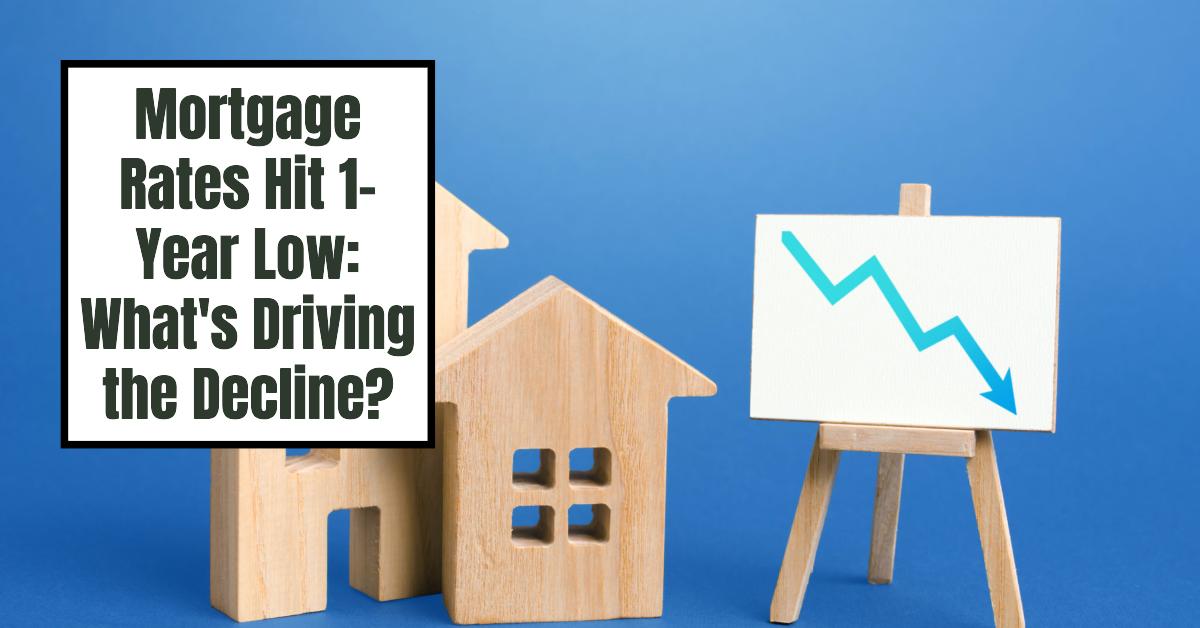Mortgage rates this week plunged to their lowest point in over a year, offering a much-needed respite for prospective homebuyers grappling with a volatile market. This significant shift has left many wondering about the driving forces behind this decline.
According to Freddie Mac, the average interest rate for a 30-year fixed mortgage currently stands at 6.47%, reflecting a substantial decrease from the peak observed last year following the Federal Reserve's aggressive interest rate hikes aimed at curbing inflation.
Table of Contents
Unraveling the Factors Behind the Drop in Mortgage Rates
While the Federal Reserve has maintained its stance on interest rates, holding them steady at a two-decade high, the recent dip in mortgage rates can be attributed to several key factors.
Anticipation of Fed Rate Cuts
A widespread expectation among experts is that the Federal Reserve is gearing up to implement interest rate cuts starting as early as its upcoming September meeting. This sentiment has been fueled by recent economic indicators, particularly a weaker-than-anticipated jobs report, further solidifying the likelihood of a rate cut.
The CME FedWatch Tool, a widely recognized gauge of market sentiment, indicates a near-certainty of an interest rate cut in September. However, opinions are divided on the magnitude of the cut, with some anticipating the typical quarter-point reduction while others predict a more substantial half-point cut.
The 10-Year Treasury Yield Connection
The yield on the 10-year Treasury bond, which represents the annual return for bondholders, experienced a sharp decline last week. This decline was prompted by the Federal Reserve signaling a potential interest rate cut and further reinforced by the underwhelming jobs report. The close correlation between mortgage rates and 10-year Treasury yields explains the parallel decline.
“These 10-year treasury rates are going to directly translate into lower mortgage rates, part of which we're observing in the recent data,” Julia Fonseca, a professor at the Gies College of Business at the University of Illinois at Urbana-Champaign, told ABC News.
Economic Slowdown and Recession Fears
The gradual cooling of the U.S. economy, coupled with easing inflation, has also contributed to the downward pressure on mortgage rates. While the economy has so far defied recession predictions, economists remain divided on the potential risks posed by current conditions.
Stijn Van Nieuwerburgh, a professor of real estate at Columbia University Business School, expressed his view to ABC News, stating, “We've reached peak interest rates. Mortgage rates are likely to come back down for the next several years.”
Uncertainties and Potential Implications
Despite the recent dip, predicting the future trajectory of mortgage rates remains a complex task. Experts acknowledge that economic performance and the Federal Reserve's response to it are crucial determinants that are difficult to forecast with certainty.
The “Lock-In Effect” and Housing Market Impact
An intriguing aspect of the current situation is the potential impact of the “lock-in effect” on the housing market. While mortgage rates have declined, they remain significantly higher than the rates enjoyed by a substantial portion of existing homeowners. This discrepancy could discourage homeowners from selling their properties and potentially facing significantly higher rates on their next mortgage.
Fonseca highlighted this concern to ABC News, noting, “As of March, roughly 60% of homeowners carried a mortgage rate at or below 4%. We still might see those borrowers reluctant to give up those mortgage rates. If they're locked in, we might not see very much movement.”
This reluctance to sell could perpetuate the existing housing market challenges stemming from limited supply, thereby keeping home prices elevated.
Monitoring Economic Indicators
Market observers are closely scrutinizing incoming economic data to ascertain whether the recent jobs report signals a broader trend of an accelerated economic slowdown. The possibility of a “soft landing,” where inflation normalizes without triggering a recession, remains a topic of debate.
Lu Liu, a professor at the Wharton School at the University of Pennsylvania specializing in real estate, emphasized the significance of upcoming data in an interview with ABC News: “People are concerned that the risk of a hard landing has increased. Right now, it's a wait-and-see moment.”
The recent plunge in mortgage rates provides a glimmer of hope for aspiring homebuyers who have been navigating a challenging market. While the confluence of factors contributing to this decline, including anticipated Fed rate cuts, economic indicators, and market dynamics, offers some optimism, uncertainties persist.
The future trajectory of mortgage rates hinges on the unpredictable nature of economic performance and the Federal Reserve's response. Furthermore, the potential “lock-in effect” on existing homeowners could impact housing market activity.
ALSO READ:
- Will Mortgage Rates Ever Be 4% Again?
- Will Mortgage Rates Ever Be 3% Again: Future Outlook
- Mortgage Rates Predictions for Next 2 Years
- Mortgage Rate Predictions for Next 5 Years
- Summer 2024 Mortgage Rate Predictions for Home Buyers
- Mortgage Rate Predictions for 2025: Expert Forecast
- Prediction: Interest Rates Falling Below 6% Will Explode the Housing Market


